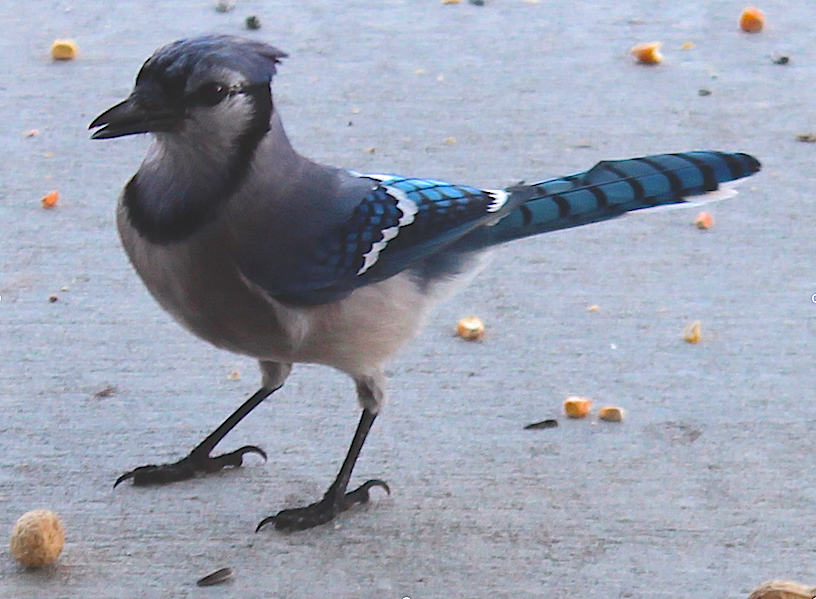Christmas will soon be here again. There is much about Christmas I love. There are many things about Christmas that took me a very long time to figure out. This is because my autistic brain doesn’t work in a way to automatically allow me to pick up social information that others expect me to know. This expected social knowledge is called the hidden curriculum. It is the information that everybody knows – everybody except people like me!
During the Christmas season there are generally more social gatherings to attend than in everyday life. These gatherings are loaded with expectation that everyone in attendance will know some basic social rules. Over the years I have been in situations during the holiday season where I have appeared rude, selfish, or in some other non-flattering way only because I didn’t understand the social landscape like everyone else.
Here is a list of a few of the hidden curriculum items I have learned concerning Christmas. I pass them along in case you haven’t yet learned them and want to avoid the social embarrassment that can happen as a result. Or, if you are a person who is familiar with these social rules, perhaps you might be helpful in cluing in those of us who haven’t come upon this information only because we truly find it to be hidden.
And please remember – if someone who you think should “know better” violates a hidden social expectation maybe hold off with the negative judgment about that individual, especially if they happen to be autistic. I can tell you that when I violated these hidden social rules I truly had not yet learned them even though I was well into adulthood. In fact, I am still learning new-to-me hidden curriculum all the time and I am near retirement age!
While you read through the list know that some of the items will make you smile or laugh. The thing with hidden curriculum mistakes is that once you understand the mistake the situation can sometimes be funny. However, when you do not understand the situation the social gaff can be downright embarrassing. In fact, sometimes the social mistake can get you into serious trouble such as being fired from a job or landing in jail! So, even though we can get some chuckles, keep in mind the consequences for not knowing may not be so amusing.
- When choosing a gift for a child, it is important not to get something that is below the child’s age range. Most children will classify such a gift as a “baby toy” and often will have nothing to do with it.
- People are not meant to sing along to the background music playing in malls.
- When playing a game with a young child, it is better to let the child win than to end up with a crying child who lost, even if you are the better player.
- If people at your workplace are chipping in for a gift for your boss, it is one of those things that you should do, if at all possible, even if you would rather not.
- If you are a person who notices the smell of a house when you walk in, know that it is generally O.K. to comment positively on a smell such as pie baking in the oven or a scented candle, but making a negative comment, such as the smell of a cat litter box or garbage, is considered rude.
- A holiday gift exchange in the workplace is usually optional. However, if every person is participating, it is likely an expectation that is technically optional, but socially required.
- Once you become an adult, you typically receive fewer presents for your birthday and for Christmas than you received as a child. This does not mean that people care less about you.
- When a visitor to a place of worship, it is best to watch and try to fit in whether or not you understand what is going on. Afterwards you may ask the friend or relative who invited you about a custom you are interested in learning.
- When you are a guest in someone’s home and they offer you a treat, such as from a candy dish, it is considered rude to ask if they have any other kind of candy or treat. If you do not like what is offered, simply say, “no thanks.”
- Children often believe Santa Claus is a real person, while adults generaly believe Santa Claus represents the spirit of giving. If someone believes differently than you, especially a child, it is better not to discuss your point of view.
- In some families, each person makes a holiday or birthday wish list. Even though it may be the most efficient way to ensure receiving a desired gift, do not give your friends a gift list unless they ask for one.
- When giving a gift, it is considered bad manners to tell others how much you paid for it or if you found it on sale.
- When eating with friends or family, everyone generally waits until all are finished eating before leaving the table.
- When people receive a card with a gift of money enclosed, it is impolite to ask how much they received. Also, if you open a card with a gift of money in front of others, it is generally considered impolite to state the amount of money.
- If you are part of a group of carolers, know that it is O.K. if some of the singers are a bit off key. In fact, it is best not to point it out.
- Even though most people regift (give away a gift they have received themselves) from time to time, they also act as if it is a social sin. Therefore, know you may regift, but you may not talk about it. Also, make sure that all old name tags are removed and that you don’t give the gift to the person who originally gave it you.
- Sometimes when the congregation is invited to sing, you will hear some poor or off-key singing. This is O.K. Do not say anything or make any gestures, such as covering your ears, to indicate your displeasure.
- Even though you may believe it is a sin to waste food, it is never acceptable to insist others eat all the food on their plates. In addition, people generally do not care that you think wasting food is a sin, so don’t mention it.
- When choosing gifts, it is best to choose something the recipient will enjoy even if it is not something you would enjoy.
- At dessert time, even though you ate too much and feel like throwing up, nobody will want to know. It is sufficient to say you are too full for dessert.
- When receiving a gift, it is good manners to say thank you even if you do not particularly like the gift. You might think of it as thanking the giver for thinking enough of you to select, wrap, and give you a gift.
- Some people attend parties on New Year’s Eve, some people stay home and watch TV to see the ball drop in Time’s Square at midnight and some people go to bed as usual. It is fine to spend the evening any way you wish.
- Sometimes at a big New Year’s Eve party people kiss others on the lips at midnight, whether they know the person or not. This is probably the only time it is okay to kiss a total stranger.
- A new year’s resolution is a statement of a goal a person would like to reach in the new year. If you make a new year’s resolution and are not able to keep it, it’s okay.
BOOKS BY JUDY ENDOW
Endow, J. (2019). Autistically Thriving: Reading Comprehension, Conversational Engagement, and Living a Self-Determined Life Based on Autistic Neurology. Lancaster, PA: Judy Endow.
Endow, J. (2012). Learning the Hidden Curriculum: The Odyssey of One Autistic Adult. Shawnee Mission, KS: AAPC Publishing.
Endow, J. (2006). Making Lemonade: Hints for Autism’s Helpers. Cambridge, WI: CBR Press.
Endow, J. (2013). Painted Words: Aspects of Autism Translated. Cambridge, WI: CBR Press.
Endow, J. (2009). Paper Words: Discovering and Living With My Autism. Shawnee Mission, KS: AAPC Publishing.
Endow, J. (2009). Outsmarting Explosive Behavior: A Visual System of Support and Intervention for Individuals With Autism Spectrum Disorders. Shawnee Mission, KS: AAPC Publishing.
Endow, J. (2010). Practical Solutions for Stabilizing Students With Classic Autism to Be Ready to Learn: Getting to Go. Shawnee Mission, KS: AAPC Publishing.
Myles, B. S., Endow, J., & Mayfield, M. (2013). The Hidden Curriculum of Getting and Keeping a Job: Navigating the Social Landscape of Employment. Shawnee Mission, KS: AAPC Publishing.
Originally written for and published by Ollibean on December 12, 2015
To leave a comment at the end of this blog on the Ollibean site click here.




